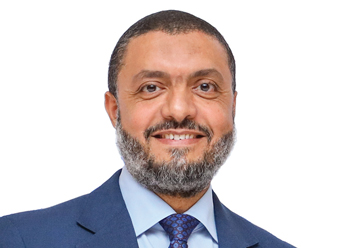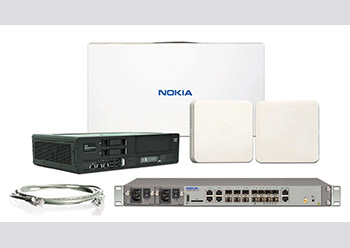
 More organisations are realising the potential of AI in healthcare
More organisations are realising the potential of AI in healthcare
For the Middle East and African (MEA) healthcare sector, the experience of the last two years has changed priorities, attitudes and urgency when it comes to embracing digital transformation. For many providers the conversation has changed from talking about Artificial Intelligence (AI) implementation, to taking concrete steps for making it happen.
More organisations are beginning to realise the potential of AI when it comes to improving healthcare efficiency; from harnessing genetic data for ground-breaking genomic research, to optimising workflows, to improving frontline support and assisting in the diagnosis of rare and complex diseases.
It reflects a worldwide trend, with GlobalData forecasting in January that the value of the healthcare segment of the AI platforms market would rise to $5.7 billion by 2025 (from $1.6 billion in 2019). According to GlobalData’s Filings Analytics Database, mentions of ‘AI’ within healthcare, pharma, and medical device company filings have almost doubled in just three years, from 700 in 2018 to 1,100 in 2021.
For all these opportunities and interest, however, the health and life sciences industry has had to adjust to the upheavals caused by the last two years of pandemic. It has faced unprecedented disruption to supply chains, and has had to find clever solutions to splintering workforces, remote working, and labour shortages.
 |
|
Mohammed Saleh |
Connecting components
Though the appetite for AI adoption is there, MEA healthcare decision makers have also found themselves having to confront lingering hesitancy, both internally and among external partners and stakeholders. This is largely down to fears within the industry that AI is being phased in as a way of ‘replacing’ healthcare providers, rather than in a supplementary capacity, complementing the good work already being carried out.
According to Mohammed Saleh, Microsoft’s health and life sciences lead for the MEA region, procurement and supply chain has also affected the confidence of healthcare providers. Organisations have realised the importance of accelerating connectivity between vital components within the industry, but are often hesitant to implement the appropriate technology to help delivery with minimal disruption to practice.
“Although we are not necessarily seeing the integration or consolidation of data at this point,” he said. “Organisations are at least starting to ask important questions: How can I connect my system to other systems? How can we connect systems to applications and ecosystems across different countries?”
 |
|
AI: transforming the healthcare space |
A five-pronged approach
Saleh proposes taking “a five-pronged approach” to implementing AI within a healthcare setting: finding the right technology; changing the culture within the organisation; explaining the benefits; easing the minds of stakeholders; and integration.
“The first of these is about shopping around until the correct tool can be found,” he said. “And doing it at cost. The second is thinking about restructuring within an organisation to facilitate the easier implementation of tech solutions. Third is making people aware of what AI can do to make the delivery of healthcare easier,” he added.
This could take the form of utilising machine learning technology as an assistant diagnostic tool, or managing large patient numbers, scheduling appointments and making the difficult job of administration more efficient and easy to manage.
This connects to the fourth prong, which is about easing the minds of stakeholders and practitioners around the ethics of AI. Those involved in the development of machine learning are still fighting the perception that solutions are to do with ‘replacing’ jobs or cutting corners. The reality is more to do with implementing an effective collaborative approach within an organisation, whereby AI can perform difficult and time-consuming tasks which otherwise prevent healthcare professionals from effectively doing their jobs.
Saleh gives the example of a chest x-ray, where AI has the capability of reading results and assisting in the diagnosis of lung cancer within 30 seconds of a read-out being processed. In most cases, a diagnosis like this could take anywhere between a few days and a few months. Now physicians and medical professionals can get quick and accurate guidance during the testing process itself.
“The fifth prong is integration,” he said. “To take Microsoft as an example, we have multiple tools, products, internal solutions, and partner solutions which make it easier for healthcare organisations to implement AI into their workflow with minimal disruption.
“For peace of mind, it might be worth organisations studying the impact of optimisation in either a clinical or operational capacity and comparing it with how things were before. Has the experience of patients been enhanced? How does this reimagine care delivery moving forward?”
Changing attitudes
Many of the problems when it comes to AI adoption are less to do with organisational infrastructure, and more related to mindset and hesitancy around change within the healthcare industry as a whole.
Saleh acknowledges that there is still a capability gap between organisations and economies across the region, making a standardised approach more of a challenge.
“We call this health information exchange, whereby organisations with different operational standards can still communicate despite the disparities between them,” he says. “At Microsoft, we have a good lead on the market with our Fire interoperability platform. This plugs the gap between organisations using legacy software and organisations in countries with more up-to-date technology.
“Ordinarily organisations can communicate effectively between applications, devices and systems without introducing an interoperability platform to make it happen. But the maturity gap within MEA makes it necessary.”
Ultimately, the key to transforming the healthcare space across the board is to encourage participation from all stakeholders within the industry: C-level, administrative, pharmaceutical, frontline, IT staff, clinical leaders, and finance. This has to be done, not only at an organisational level, but across the healthcare sector.
Not only is this the most effective way to build a coherent AI strategy, but it prepares people for all eventualities, following a period of unprecedented changes and challenges.











